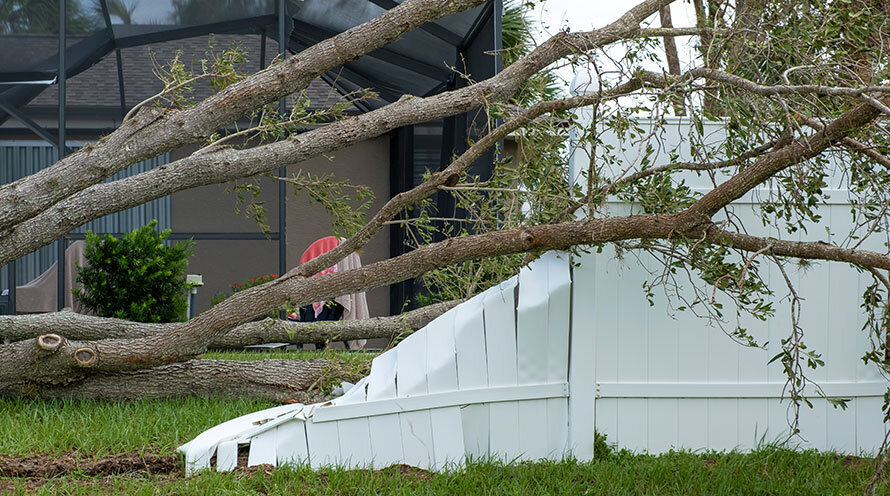
Fires, storms, and floods can devastate homes and commercial buildings within hours or even minutes. Beyond the visible damage, these disasters often create hidden dangers, such as structural instability, mold growth, and the release of hazardous materials like asbestos and lead-based paint. To ensure your family, tenants, or any other building occupants remain safe, it’s paramount to understand the importance of proper post-disaster cleanup.
In this article, we’ll discuss the measures necessary to protect your loved ones. We’ll also cover the steps required to ensure compliance with environmental and occupational safety and health laws. Read on for the details.
Keeping People Safe Is Essential
Protecting your property is important, of course, but preventing harm to the people in and around it is essential. The first action to take immediately after a disaster event is ensuring the safety of everyone in or near the structure. However, if you have evacuated a building, you should not re-enter it until emergency personnel declare the building safe. Going back in before you have received clearance puts you and first responders at risk.
Once you have been assured the building is structurally sound and safe to enter, the first order of business should be to turn off the air handling system. This will serve as a protective measure to ensure hazardous materials, such as asbestos or lead-based paint dust, are not circulated throughout the building, potentially expanding the extent of the contamination issue and making the material cleanup more challenging. It is also crucial to be mindful of walking through any dislodged building debris to ensure the materials remain in the area where the disaster occurred and are not tracked into any additional spaces within the building.
Additionally, in the event of a flood or water loss, you should also lock out and tag out the power to the part of the structure where the damage occurred. This will prevent any electrocution or shock risks associated with electrical components and electrical equipment. Lastly, it is of utmost importance to secure all entrances to the damaged areas to prevent anyone else from spreading the contamination. People not familiar with the risks may think it’s safe to re-enter the space once the initial danger has passed.
Document the Damage and Report Your Claim
Once the immediate risk has been mitigated or controlled through the above measures, it’s essential to notify your insurance provider as soon as possible. Be sure to ask about coverage for restoration, testing, and abatement services.
Reporting a claim will likely involve documenting the extent of the damage for insurance and restoration records. However, since the full extent of the environmental hazards may be unknown at this point, it is crucial to wear a disposal coverall and a half-face respirator with P-100 HEPA cartridges (at a minimum) when re-entering the secured, potentially contaminated area. It is also essential to dispose of the coveralls in the area prior to exiting, so you don’t track material out with you.
If you feel uncertain or uncomfortable about documenting the damage safely, you can always wait for emergency restoration professionals to take photos for you. They know how to navigate potentially unsafe conditions and what to look for in terms of documenting an insurance claim.
Get Help From Experienced Professionals
The next step, and perhaps the second most critical action taken (besides ensuring everyone’s safety), is to contact the right professionals. Almost all building insurers require remediation work to be performed by contractors who are professionally trained, licensed, and insured for an incident to be covered.
Intentionally hiring unlicensed and uninsured contractors will undoubtedly expose you to liability lawsuits from the building’s occupants and potentially criminal enforcement from federal or state regulators. This is especially true if the improper cleanup leads to injuries or health issues for the occupants and workers.
Methodical Remediation From Trained Experts
Colorado Hazard Control is licensed and trained in disaster remediation, particularly as it pertains to asbestos, lead-based paint, and mold. We are well-equipped to assist you with the necessary next steps to get your home or building back in working order.
Our project management team puts you in contact with environmental consultants who can determine what kind of hazards, if any, exist in the building. These individuals perform the testing necessary to determine the extent to which the hazardous material has spread, describing the types and locations of materials and explaining the extent of the remediation needed. The process involves a series of wipe sampling, vacuum sampling, and air sampling in compliance with federal and state regulations, to determine the extent of the contamination.
Once the above steps have been completed, our team promptly begins mitigating the identified hazards. In the event of a water incident, flood cleanup services or storm damage restoration should commence as soon as possible, as mold can begin to set in and structural wood can start to rot within 24-48 hours.
Prompt fire damage cleanup is also essential. The longer the smoke odor sits and penetrates building materials, the more extensive the deodorization process will be. Furthermore, highly acidic soot residues can begin to corrode other undamaged parts of the building.
Our employees ensure that all necessary asbestos, lead-based paint, and mold remediation needed is executed to the highest professional standard. They also perform any essential drying and dehumidification to ensure comprehensive moisture removal.
Be Ready Act When an Emergency Occurs
Fires, storms, and floods can be overwhelming. But a safe, regulatory compliant, and health-conscious recovery is achievable. Professional emergency cleanup and hazardous materials abatement services aren’t optional; they’re essential.
Whether you’re a homeowner, landlord, or building manager, your best protection lies in fast action, licensed experts, and informed decision-making. Always treat damaged and disturbed building materials as potentially hazardous, regardless of the building’s age. Protect yourself and everyone in your home or building by hiring professionals skilled in fire damage cleanup, flood cleanup services, and storm damage restoration to do the job, ensuring the work meets all of the applicable regulatory and health standards.
Contact Colorado Hazard Control today to learn more about our emergency cleanup services so you’re ready to act if the unexpected happens.
About Colorado Hazard Control
Colorado Hazard Control is the natural industrial, commercial and residential environmental solutions provider achieving the highest quality workmanship by focusing intensely on what we do best — health, safety, and environmental compliance. With locations in Denver, Colorado Springs and Pueblo, we offer our services statewide. Whatever your needs - lead abatement, mold remediation, radon mitigation, demolition, or training - we're there with 24-hour emergency response available. https://www.coloradohazard.com
Media Contact:
Lynnelle Beaver, 303-410-4941
Source: Prodigy.press
Release ID: 1661372





